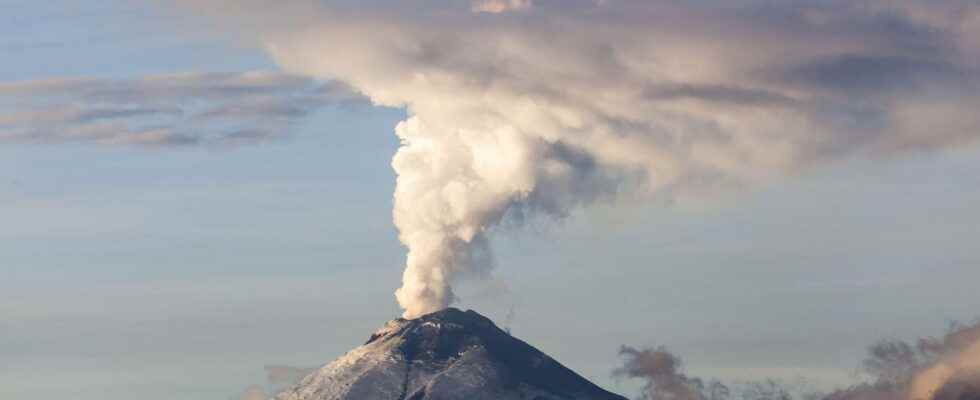Volcanic eruptions are capable of modifying the climate of the Planet. Depending on their power and their location on the globe, these eruptions, which last only a few days to a few weeks, can nevertheless lower temperatures by 0.5 to more than 1°C for several years, how?
You will also be interested
[EN VIDÉO] 8 things to know about volcanoes Objects of fascination and terror, volcanoes are among the most irreducibly indomitable forces of nature. From the mythological origin of their name to the eruptions that have marked history, here are 8 things to know about them.
The strongest volcanic eruptions are capable of cooling the climate for several years, emitting chemical particles that change the composition of theatmosphere. Large-scale eruptions emit massive amounts of gas and ashes: these two elements are responsible for theimpact on the weather. They can stay in the troposphere (between 5 and 15 kilometers above sea level) three to four years and thus reduce the amount of solar radiation on Earthlowering temperatures and even changing the trajectories of disturbances weather report.
Aerosols limit solar radiation on Earth
The dioxide of sulfur propelled into the stratosphere (between 12 and 50 kilometers altitude) mixes with the water vapor of the atmosphere. This gas turns into sulfuric acid liquid and becomes an aerosol, fine particles solid or liquids in suspension. At this altitude, the winds are powerful and allow the emitted ashes and gases to circulate across the globe for three weeks, but the “ radiative forcing negative (the fact that the particles prevent solar radiation from reaching the Earth) can last two to three years. Ashes also contribute to the formation of cloudsand therefore of precipitationthe famous acid rain.
The aerosols absorb solar radiation and reflect it back into space: the stratosphere heats up by a few degrees. But the temperature of the lowest layer of the atmosphere drops, the troposphere, and theenergy received on the surface of the Earth drops by 5 to 10%. During the months and years following the eruption, the earth’s temperature can then drop from a few tenths of a degree to 1°C for the strongest eruptions.
The Pinatubo eruption: up to 1°C colder
The most remarkable case of climate change generated by a volcanic eruption is that of the Mount Pinatubowhich erupted in the Philippines on June 15, 1991. An estimated 20 million tons of sulfur dioxide (SO2) released into the atmosphere at a height of 20 kilometers. The gas from the Pinatubo caused 1 to 5% (depending on the area) less solar radiation, leading to an average temperature drop of -0.1 to -0.6°C on average on the planetary scale , and down to -1.3°C locally over the following three years. the cooling started with the tropics and then spread to latitudes middle and then to high latitudes within a few years.
The climatologists consider that the impact of volcanoes on the climate is part of the natural variability of the climate. The study of the climate has shown that in the past, volcanic eruptions major events have led to volcanic winters “: the eruption of the volcano of Lake Toba, in Indonesia, 73,000 years ago, would have caused an ice age responsible for a collapse massive human population and the biodiversity.
The effect on the climate depends, not only on the power and the duration of the eruption, but also the height of the ash cloud, and the location of the volcano: if the volcanic eruption occurs at theequator like that of the Pinatubo, the impact on the climate is stronger because the aerosols spread over both hemispheres. An eruption located in high latitudes, such as that of the Katmai volcano in Alaska in 1912, has less effect. The Icelandic volcano Eyjafjöll, whose the eruption had paralyzed air traffic in 2010, had no impact on the climate: its ash cloud had not risen high enough, only 11 kilometers above sea level. More recently, the eruption of the Hunga Tonga volcano, which occurred on January 15, 2022, would not be powerful enough to cool the climate according to Denison University Department of Geosciences. Although theexplosion was spectacularits 400 million kilos of sulfur dioxide, propelled 30 kilometers above sea level, are not enough to have a significant impact on the climate.
Interested in what you just read?
